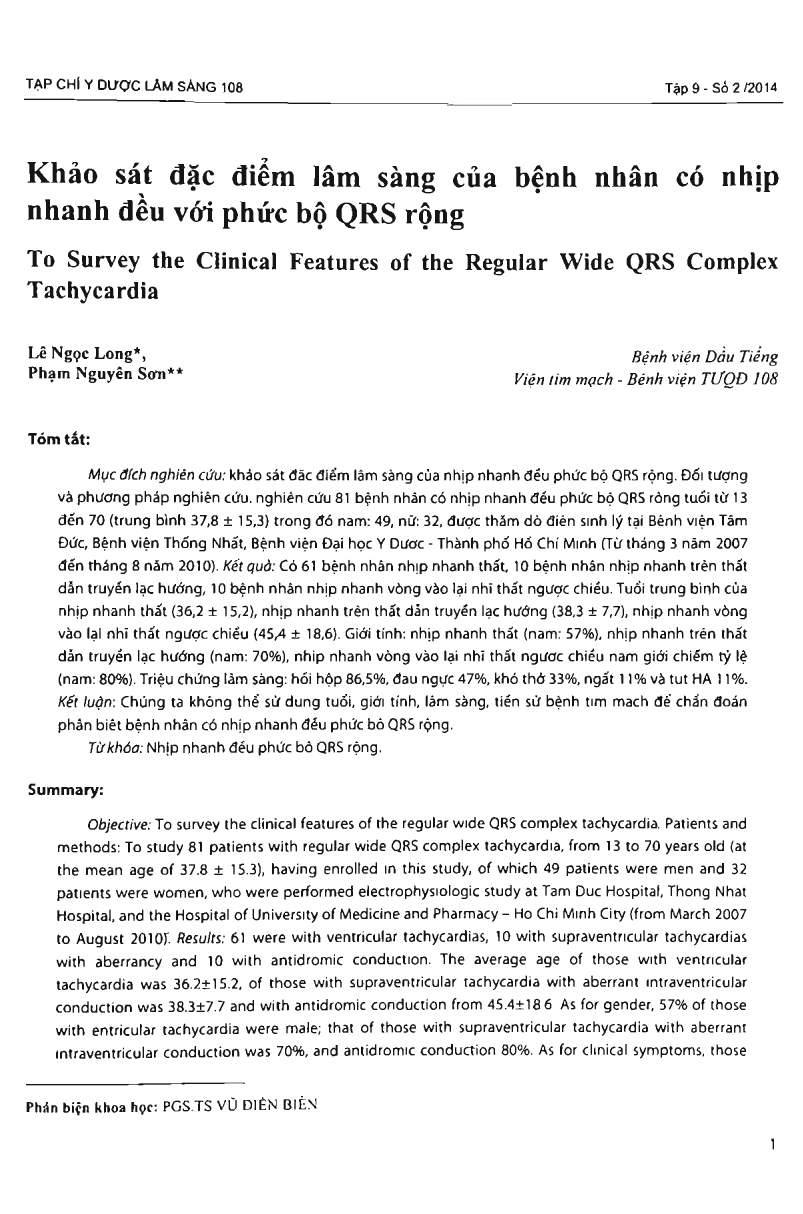
Objective: To survey the clinical features of the regular wide QRS complex tachycardia. Patients and methods: To study 81 patients with regular wide QRS complex tachycardia, from 13 to 70 years old (at the mean age of 37.8 +/- 15.3), having enrolled in this study, of which 49 patients were men and 32 patients were women, who were performed electrophysiologic study at Tam Duc Hospital, Thong Nhat Hospital, and the Hospital of University of Medicine and Pharmacy - Ho Chi Minh City (from March 2007 to August 2010r. Results: 61 were with ventricular tachycardias, 10 with supraventricular tachycardias. with aberrancy and 10 with antidromic conduction. The average age of those with ventricular tachycardia was 36.2 +/- 15.2, of those with supraventricular tachycardia with aberrant intraventri;ular conduction was 38.3 +/- 7.7 and with antidromic conduction from 45.4 +/- 18.6. As for gender, 57 percent of those with entricular tachycardia were male; that of those with supraventricular tachycardia with aberrant intraventricular conduction was 70 percent, and antidromic conduction 80 percent. As for clinical symptoms, those with palpitation took up 86.5 percent; chest pain 47 percent; dyspnea 33 percent; syncope 11 percent; and hypotension 11 percent. Conclusion: the authors cannot use the age, gender, clinical manifestations and the history of cardiovascular disease for the differential diagnosis in the patients with regular wide QRS complex tachycardia.
- Đăng nhập để gửi ý kiến
